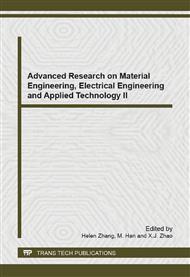p.239
p.245
p.249
p.254
p.260
p.264
p.269
p.273
p.279
Guided Waves Propagating Analysis in Hollow Cone
Abstract:
Cone-like pipes are serving in some special area, not common but always pivotal. In order to extend the ultrasonic guided wave detection technique from hollow cylinder to hollow cone, this paper make numeric analysis on both of them. Firstly, some basic theory about the guided waves and related simulation method were introduced. Secondly, a standard hollow cylinder was selected and made simulation for proving the validity and obtaining a group of pre-set parameters for following cone simulation. After that, the simulation about the hollow cone was made and its results were presented. At last, some conclusions were found by comparing the results of two different simulations. The guided waves propagating in hollow cone exhibit a slower velocity, a quicker dispersion ration and a more noisy background.
Info:
Periodical:
Pages:
264-268
Citation:
Online since:
July 2014
Authors:
Keywords:
Price:
Сopyright:
© 2014 Trans Tech Publications Ltd. All Rights Reserved
Share:
Citation:


